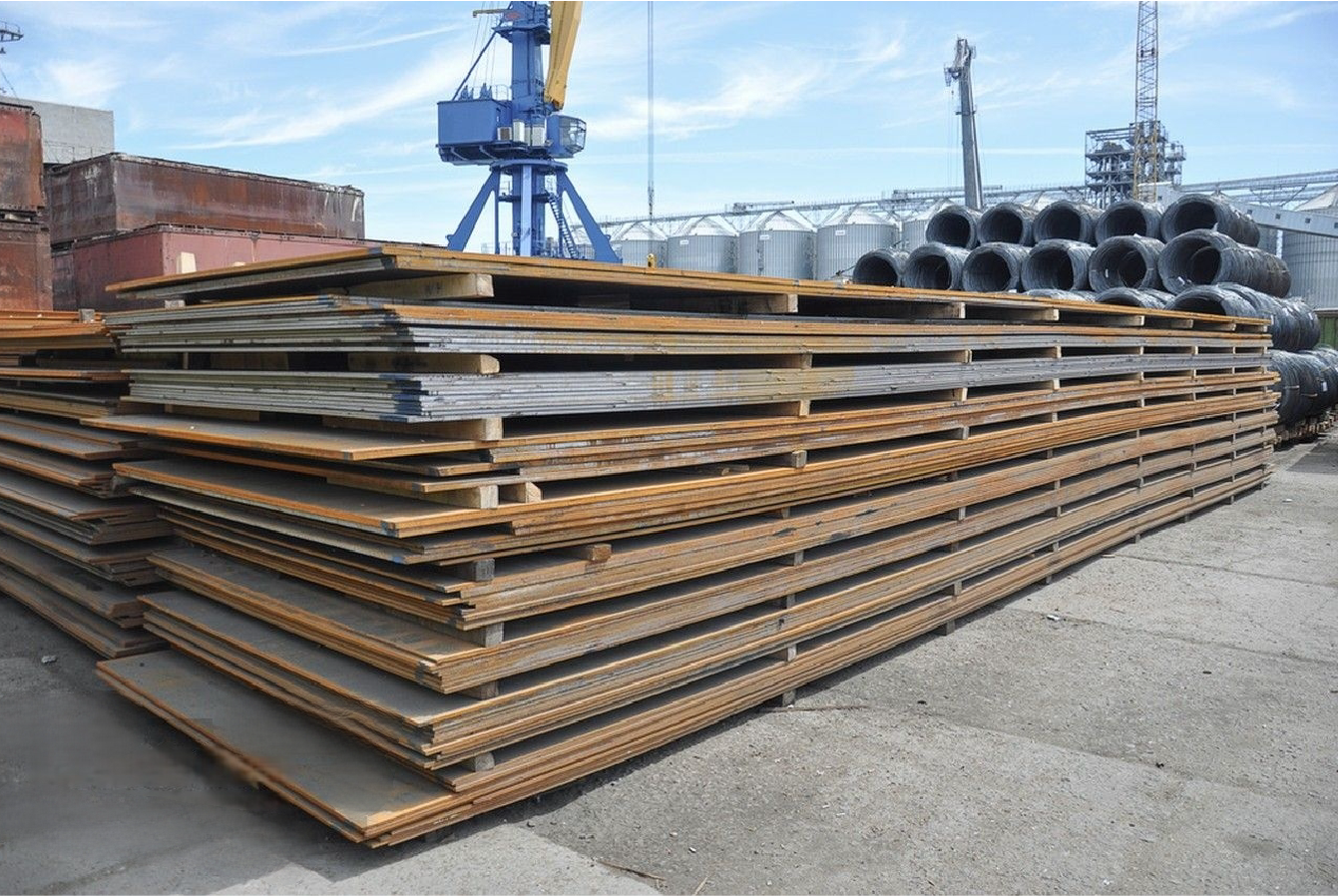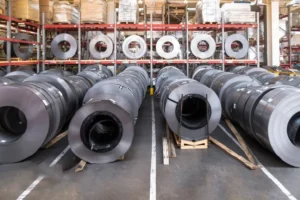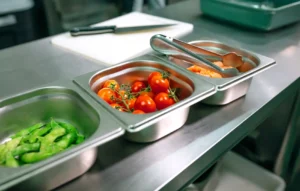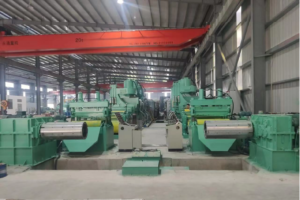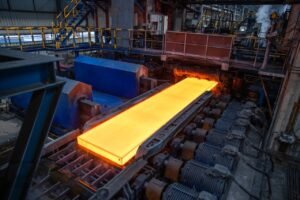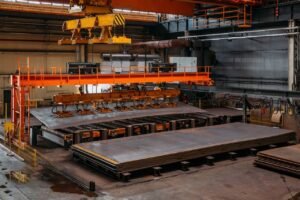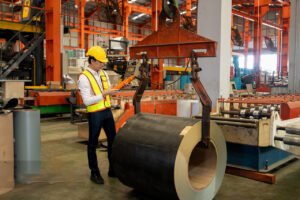Cold-Rolled Sheet Finishes: BA vs 2BA vs 2D

Struggling to select the right stainless steel finish? Choosing incorrectly can lead to budget overruns, functional failures, and a final product that just doesn't look right. You might pay for a mirror finish that's unnecessary or end up with a dull look that compromises your brand's quality perception.
BA (Bright Annealed) is a highly reflective, mirror-like finish, while 2BA is a slightly less brilliant but still very bright alternative. In contrast, 2D is a dull, non-reflective matte finish, ideal for industrial uses or as a base for further polishing.
As the Global Business Director for MFY, I’ve guided countless clients through this very decision. A finish is more than just a surface; it’s a critical component that dictates performance, fabrication ease, and total cost of ownership. Let's move beyond the surface-level definitions and explore the practical implications of each finish to ensure your next project is a success.
The distinction between these finishes goes to the heart of the manufacturing process. It's a tale of controlled atmospheres, polished rolls, and chemical treatments. A 2D finish is the result of cold rolling followed by annealing and pickling, which creates a uniform but rougher, non-reflective surface. BA, on the other hand, is annealed in an oxygen-free environment, preventing the formation of oxide scale and preserving its bright, reflective quality1 from the mill. 2BA fits in as a variation of BA, offering most of the brightness but at a potentially different cost or availability point. Understanding this manufacturing DNA is the first step in making a strategic, rather than a purely aesthetic, choice for your application.
What are the defining characteristics of BA, 2BA, and 2D finishes for cold-rolled sheets?
Are you getting lost in technical specifications like surface roughness (Ra) and reflectivity percentages2? This confusion often leads to specifying a material that isn't fit for purpose, causing project delays and unexpected costs. Let's demystify these terms and define each finish by its core visual and physical traits.
BA (Bright Annealed) is defined by its smooth, highly reflective mirror-like surface with a very low surface roughness. 2BA is a similar bright finish, often considered a slightly less perfect or economical version of BA. 2D is characterized by a rougher, matte, low-reflectivity surface.
These characteristics are not just about appearance; they are direct results of the final stages of the steel manufacturing process. For instance, the smooth surface of a BA finish isn't just for looks—it significantly impacts cleanability and corrosion resistance, a critical factor for clients we work with in the food processing and medical sectors. I recall a client in Southeast Asia manufacturing dairy equipment who initially considered a 2D finish to save costs. However, after we discussed the implications for hygiene—how the rougher 2D surface could harbor bacteria compared to the easily sanitized BA finish—they realized the long-term value and compliance benefits of the brighter finish. This choice wasn't just about aesthetics; it was about product integrity and public safety. Similarly, the matte texture of a 2D finish is a deliberate feature, not a flaw. For an industrial client producing deep-drawn components, that slightly rougher surface is a benefit, as it retains lubricants better during the stamping process, reducing tool wear and improving production efficiency. Understanding this "why" behind the "what" is crucial. Let's delve deeper into the specific metrics and manufacturing nuances that create these distinct personalities in stainless steel.

To truly grasp the differences, we must look at the trio of manufacturing, surface metrics, and fabrication behavior. Each finish is engineered for a purpose, and its characteristics are a direct reflection of that intent. Choosing the right one requires moving beyond a simple visual check and understanding the data and processes that define them. This deeper knowledge prevents costly mismatches between material and application, ensuring the final product performs as intended, from a structural beam to a high-end kitchen appliance.
The Manufacturing Journey: From Dull to Brilliant
The journey to a final finish is a multi-step process. The foundational finish, 2D, begins with a cold-rolled sheet that is then annealed (heat-treated to soften it and relieve stress) and pickled (chemically descaled). This process results in a uniform, but distinctly non-reflective, matte surface. Because the annealing happens in a standard atmosphere, an oxide layer forms and must be removed by the acid pickling bath, which contributes to its duller appearance. It is the most basic and often most economical cold-rolled finish available.
The BA (Bright Annealed) finish takes a different path to achieve its signature luster. After cold rolling, the steel is annealed in a tightly controlled furnace with an inert atmosphere, such as hydrogen or nitrogen. This oxygen-free environment prevents any surface oxidation from occurring during the heat treatment. Consequently, there is no scale to remove, and no pickling is required. The sheet retains the smooth, bright surface imparted by the highly polished rollers used during the cold-rolling stage. This process is more complex and energy-intensive, which is reflected in the cost, but the result is a superior, mirror-like finish directly from the mill.
The 2BA finish is often a source of confusion. It is not a universally recognized standard in the same way as 2D or BA (which is designated as 2R in European standards). Generally, 2BA is understood to be a bright finish that doesn't quite meet the premium reflectivity or surface perfection of a prime BA finish. It can be a BA-processed sheet with minor imperfections, or a classification used by some mills for a slightly less brilliant product. For many applications where high reflectivity is desired but a flawless mirror is not essential, 2BA can present a cost-effective alternative to a standard BA finish.
A Tale of Two Surfaces: Roughness (Ra) and Reflectivity
Surface texture is quantified using a metric called Surface Roughness, or Ra, measured in micrometers ($µm$). A lower Ra value indicates a smoother surface. This single metric has profound implications for performance. A 2D finish typically has a higher Ra value, often in the range of $0.4$ to $1.0$ $µm$. This texture, while not ideal for aesthetic applications, provides an excellent surface for paint, adhesives, and other coatings to grip.
In stark contrast, a BA finish boasts a very low Ra value, typically under $0.1$ $µm$. This extreme smoothness is what creates its high reflectivity and mirror-like appearance. It also makes the surface highly resistant to particle adhesion, meaning it's easier to clean and more hygienic, a critical feature for food, medical, and pharmaceutical applications. 2BA falls somewhere in between or at the lower end of the BA spectrum, offering a smooth surface that is significantly better than 2D but might have a slightly higher Ra value or less visual clarity than a premium BA sheet.
The table below provides a clear comparison of these key metrics:
| Feature | 2D Finish | 2BA Finish | BA Finish (2R) |
|---|---|---|---|
| Appearance | Dull, matte, non-reflective | Bright, reflective | Highly reflective, mirror-like |
| Manufacturing | Annealed & Pickled | Bright Annealed | Bright Annealed (Prime) |
| Typical Ra Value | $0.4 - 1.0$ $µm$ | ~$0.1 - 0.2$ $µm$ | < $0.1$ $µm$ |
| Reflectivity | Low | High | Very High (>85%) |
| Cleanability | Fair | Excellent | Superior |
From Sheet to Product: Implications for Fabrication
The characteristics of each finish directly influence how they behave during fabrication processes like forming, bending, and welding. The ductility offered by the 2D finish, combined with its lubricant-retaining surface, makes it highly suitable for aggressive deep-drawing operations. We've seen this with clients in India's automotive sector who produce complex under-body components; the 2D finish performs reliably without splitting and holds lubricants well, extending the life of their stamping dies. However, after welding, a 2D surface is difficult to blend, and the weld area will be noticeable.
Fabricating with a BA finish requires a different approach. Its smooth, hard surface is more prone to scratching and requires careful handling, often with a protective PVC or PE film applied, which adds to the cost and processing time. Bending and forming must be done with precision to avoid marring the mirror-like surface. After welding, the heat-affected zone will lose its bright finish, requiring extensive grinding and polishing to restore a seamless appearance, a process that demands significant skill and labor.
This is where 2BA can offer a practical compromise. Since its surface is already slightly less perfect than a premium BA, the demands for handling might be less stringent. For a client of ours in the Middle East producing decorative architectural panels, 2BA provided the necessary brightness and modern aesthetic, but the slightly lower reflectivity was more forgiving of minor imperfections that can occur during installation in a challenging construction environment. This made the fabrication and installation process more efficient and cost-effective compared to using a flawless BA finish.
How do BA, 2BA, and 2D finishes impact the performance and appearance of stainless steel sheets?
Your product's appearance is failing in the field, or its performance is subpar, and you suspect the finish is to blame. Agitation: A peeling coating or unexpected corrosion can ruin your reputation and lead to costly warranty claims. Solution: Understand precisely how each finish dictates appearance and performance.
BA and 2BA finishes provide a bright, smooth, and modern appearance with excellent corrosion resistance and cleanability. The 2D finish offers a functional, non-reflective matte look and a surface texture that enhances adhesion for coatings and performance in deep-drawing applications.
The impact of a finish extends far beyond its initial look. It's about how that look holds up over time and how the surface's physical properties contribute to the product's lifespan and functionality. For example, the appearance of a BA finish communicates high quality and cleanliness, which is why it’s a staple in high-end appliances. I worked with a manufacturer of commercial refrigerators who switched from a brushed finish to a BA finish for their interiors. The immediate feedback from their customers—restaurants and hotels—was not just about the premium look, but also about how much easier the units were to clean and maintain, directly impacting their operational hygiene standards. This demonstrates that appearance and performance are deeply intertwined. In contrast, the rugged, utilitarian appearance of a 2D finish is a perfect match for its performance in harsh industrial environments where aesthetics are secondary to durability and function. Choosing the right finish means aligning these two critical aspects—how it looks and how it works—with your product's specific needs and its user's expectations.

To fully appreciate the impact of these finishes, we must analyze them through the lenses of aesthetics, durability, and functional performance. The choice is not merely cosmetic; it dictates the material's interaction with its environment, its resistance to wear and tear, and its suitability for specific manufacturing processes. A high-gloss BA finish3 might be visually stunning but could be a poor choice for a high-traffic area prone to scratches. Conversely, a 2D finish, while lacking aesthetic flair, provides a robust foundation for industrial parts that need to withstand rigorous forming and fabrication. This analysis will equip you to make a more holistic and strategic decision, balancing the visual appeal with the long-term service life of your product.
The Aesthetic Spectrum: From Industrial Matte to Architectural Mirror
The visual identity of a product is often its first impression, and the finish is central to this. The 2D finish sits at the purely functional end of the spectrum. Its dull, gray, matte appearance is non-directional and uniform, but it lacks any reflective quality. This makes it unsuitable for decorative or architectural applications where aesthetics are a primary concern. Its value lies in its subtlety and its ability to be a blank canvas. For industrial machinery, chemical holding tanks, or parts that will be painted or hidden from view, the 2D finish is ideal because it does not command visual attention and its cost-effectiveness is a major advantage.
On the opposite end is the BA finish, the pinnacle of aesthetic appeal directly from the mill. Its smooth, bright, highly reflective surface is akin to a mirror, creating a sense of clean, modern sophistication. This is why it is the finish of choice for architectural trim, high-end kitchen appliances, decorative panels, and automotive brightwork. As a case in point, we supply BA-finished stainless steel to a producer of luxury elevators in Russia. The reflective surfaces inside the elevator cars create a sense of spaciousness and opulence, directly contributing to the product's premium market positioning. The appearance is not just a feature; it is integral to the user experience.
The 2BA finish occupies a strategic middle ground. It delivers a bright, reflective appearance that is far superior to 2D but may lack the perfect, deep clarity of a prime BA finish. For many applications, this is an ideal compromise. Consider commercial kitchen backsplashes or food service equipment. A 2BA finish provides the desired look of hygiene and brightness but is more forgiving of minor surface scratches and fingerprints than a perfect BA mirror, while being more visually appealing than 2D. It delivers a high-end look without the premium cost and handling demands of a flawless BA finish.
Durability and Longevity: Corrosion, Wear, and Tear
The durability of stainless steel is intrinsically linked to its passive layer—a thin, chromium-oxide film that protects the steel from corrosion. The quality of the surface finish has a direct impact on the integrity of this layer. A smoother surface is less prone to collecting contaminants and chlorides, which can break down the passive layer and initiate corrosion. With its extremely low Ra value, the BA finish offers the highest level of corrosion resistance among these three finishes. Its smooth, non-porous surface resists pitting and crevice corrosion far more effectively, making it the superior choice for harsh environments, such as marine applications or chemical processing equipment, when specified in the correct grade (e.g., 316L).
The 2D finish, with its rougher texture, has more microscopic peaks and valleys where corrosive agents can accumulate. While the pickling process ensures it is passive and corrosion-resistant, it is generally considered less resistant than a BA finish under the same environmental conditions. For general industrial use where the environment is controlled, this is perfectly adequate. However, for applications with high exposure to moisture and salts, a smoother finish would provide better long-term performance.
The 2BA finish, being very smooth, offers corrosion resistance that is nearly on par with BA. This makes it a strong contender for durable goods that require both a long service life and a pleasing appearance. A compelling example is in the manufacturing of washing machine drums. We supply 2BA coils to a major appliance manufacturer for this exact purpose. The finish is smooth enough to be gentle on fabrics and offers excellent resistance to corrosion from water and detergents, ensuring the drum remains pristine and functional for the life of the appliance, all while being more economical to produce than a full BA finish.
Functional Performance: How the Surface Interacts with the World
Beyond aesthetics and corrosion, the finish impacts functional performance in other ways. For applications requiring coatings, the 2D finish excels. Its textured surface provides a mechanical key that dramatically improves the adhesion of paint, powder coatings, and bonding agents. A manufacturer of painted electrical enclosures we work with relies exclusively on 2D-finished steel for this reason. The paint adheres so effectively that it reduces the need for extensive surface preparation like sandblasting, saving both time and money in their production line.
The smooth surfaces of BA and 2BA are poor candidates for painting, as coatings can easily peel or chip off. Their functional advantage lies in their cleanability and non-stick properties. In the food processing industry, this is paramount. The smooth, non-porous surface of a BA or 2BA finish prevents food particles and bacteria from becoming trapped, allowing for easy and effective sanitization. This performance attribute is not just a convenience; it is a regulatory requirement in many sectors.
Furthermore, the reflectivity of a BA finish4 can be a functional feature. It is used in lighting fixtures and solar reflectors to maximize light distribution. We've even supplied BA-finished sheets to an agricultural technology company in Southeast Asia for use in specialized indoor farming systems, where the reflective walls ensure that light from grow lamps is distributed evenly to all plants, improving crop yields. In this context, the appearance is secondary to the functional performance of its reflectivity.
What industries or applications prefer BA, 2BA, and 2D finishes, and why?
You've seen the specs, but you're unsure which finish is the industry standard for your specific application. Agitation: Choosing a non-standard finish can lead to supply chain issues, higher costs, and a product that doesn't meet customer expectations. Solution: Let's explore the typical applications for each finish.
Industries prefer finishes based on a balance of aesthetics, function, and cost. BA/2BA finishes are favored in architectural, appliance, and food industries for their appearance and hygiene. 2D finishes are the go-to for industrial, automotive, and petrochemical applications requiring formability and a base for coatings.
Aligning your material choice with industry best practices is a sound strategy. It ensures you are meeting established standards for performance and aesthetics that your customers and competitors already recognize. As a global supplier, we at MFY have a panoramic view of these trends. For example, the overwhelming preference for BA finishes in the high-end kitchenware market in Europe is driven by consumer demand for products that are both beautiful and easy to clean. In contrast, our partners in India’s heavy manufacturing sector almost exclusively request 2D finishes for their equipment components, prioritizing durability and cost-effectiveness over visual appeal. These are not arbitrary choices; they are strategic decisions rooted in the specific demands of the market and the application's end-use environment. Understanding these established preferences can provide a valuable shortcut in your own decision-making process, ensuring your product is perfectly positioned for its target market from the very start.

The preference for a specific stainless steel finish is rarely arbitrary. It is a calculated decision based on a range of factors including regulatory requirements, fabrication processes, environmental exposure, end-user expectations, and, of course, budget. An architect designing a landmark building will have vastly different priorities than an engineer designing a chemical storage tank. By examining the "why" behind the choices in major industries, we can uncover a clear logic that guides the selection of 2D, 2BA, and BA finishes, offering a roadmap for your own project requirements. This exploration will reveal how different sectors weigh the trade-offs between form, function, and finance.
The Workhorse Finish: Why Industrial Sectors Choose 2D
The 2D finish is the unsung hero of the industrial world. Its primary appeal lies in its functionality and cost-effectiveness. The automotive industry’s use of stainless steel finishes5 is a major factor, particularly for structural components, exhaust systems, and parts that will be concealed. The finish's excellent ductility and lubricant-retaining surface make it ideal for the severe deep-drawing processes required to form complex shapes. For instance, a typical exhaust muffler undergoes significant stamping and forming; the 2D surface withstands this process without failure. Cost is also a huge driver; for high-volume automotive production, the savings from using a 2D finish are substantial.
Similarly, the petrochemical and chemical processing industries rely heavily on the 2D finish for equipment like tanks, vessels, and piping. In these applications, aesthetic appeal is irrelevant. The primary concerns are material integrity, corrosion resistance in 304L or 316L stainless steel6, and cost. The 2D surface is perfectly adequate for performance and provides a known, reliable baseline. Furthermore, for large-scale construction projects like railcars or industrial roofing, the non-reflective nature of 2D is sometimes a benefit, preventing glare, and its lower cost makes it feasible for covering vast surface areas.
A prime example from our experience is a large construction contractor in the Middle East that we supply for industrial warehouse projects. They specify 2D-finished stainless steel for roofing and drainage systems. The material's durability against the elements is key, and the non-reflective surface is preferred for an industrial setting. The cost savings achieved by using 2D over a brighter finish allow them to allocate more budget to other critical structural elements, representing a classic case of value engineering.
The Aesthetic Standard: BA and 2BA in Consumer-Facing Industries
When a product is meant to be seen and admired, BA and 2BA finishes become the default choice. The "white goods" or home appliance industry use of BA finishes7 is a primary market. Think of the gleaming drum inside a washing machine, the interior of a microwave, or the front panel of a high-end refrigerator. A BA or 2BA finish communicates cleanliness, modernity, and quality. A client of ours, a leading manufacturer of kitchen ranges, uses BA-finished trim and control panel surrounds. This bright accent contrasts with other materials, creating a focal point and signaling to the consumer that this is a premium product.
The architectural and interior design sectors also heavily favor bright finishes. BA is used for column covers, decorative wall panels, elevator doors, and exterior cladding where a dramatic, mirror-like effect is desired. It reflects light and the surrounding environment, making spaces feel larger and more dynamic. We have supplied BA-finished sheets for hotel lobbies and corporate headquarters where the design intent was to create a memorable and luxurious first impression. The finish itself becomes a core element of the architectural statement.
Food service and medical industry requirements for BA/2BA finishes8 prefer BA/2BA for a different, though related, reason: hygiene. The ultra-smooth surface is incredibly easy to clean and sanitize, leaving no place for bacteria to hide. This is not just a preference but often a regulatory necessity. From surgical trays and instruments to commercial kitchen counters and food processing equipment, the bright, smooth surface is synonymous with a sterile environment. The visual cue of the shine reinforces the functional benefit of cleanliness, providing assurance to both operators and consumers.
The Strategic Compromise: Where 2BA Finds its Niche
While BA is the ultimate choice for mirrors and flawless decorative pieces, and 2D is the pick for heavy industry, 2BA carves out a significant niche where the requirements fall in between. It is often the "smart money" choice for applications that need a bright, aesthetic look but also need to be practical and cost-effective in large volumes. It provides about 90% of the aesthetic benefit of a full BA finish for a noticeably lower cost and with less demanding handling requirements.
Consider everyday consumer goods like high-quality cookware, kitchen sinks, and flatware. These items need to be attractive and corrosion-resistant, but they also need to withstand daily use. A perfect mirror (BA) finish would scratch too easily. A 2BA finish provides the necessary brightness and excellent cleanability without the extreme sensitivity of a BA finish. It offers a durable, attractive solution that is ideal for mass-market consumer products.
Another key area is in functional-aesthetic components. I'm thinking of a client who produces commercial refrigeration display cases for supermarkets. They need the interior to be bright and reflective to showcase the food appealingly and to be easy to clean. However, it doesn't need to be a perfect architectural mirror. A 2BA finish is the perfect solution. It provides the bright, clean look required, stands up to the daily wear and tear of a commercial environment, and keeps the overall manufacturing cost competitive—a trifecta of benefits that makes it the ideal choice for this type of application.
What criteria should be considered when choosing among BA, 2BA, and 2D finishes for specific projects?
Faced with three viable options, you're paralyzed by the decision of which finish to specify for your project. Agitation: Making the wrong choice could mean overspending on aesthetics you don't need or failing to meet critical performance standards. Solution: Use a structured set of criteria to guide your selection.
When choosing a finish, consider four key criteria: the required aesthetic and visual impact, the end-use environment and performance demands (e.g., corrosion, hygiene), the fabrication and processing requirements, and the total project budget, including material and handling costs.
Choosing a finish is a classic engineering trade-off exercise. You are balancing competing priorities to find the optimal solution. In my role at MFY, I often act as a consultant, walking clients through this decision-making process. I start by asking them to look beyond the steel itself and consider the entire lifecycle of their product. Who is the end-user? What are their expectations? What environment will the product live in? What manufacturing processes will it undergo? Recently, a new client in the construction sector wanted to use a BA finish for all their stainless steel fixtures. After we evaluated the criteria together—noting that many fixtures were in low-visibility, high-traffic areas—they realized a combination of 2D for hidden brackets and 2BA for visible plates provided a much better return on investment without compromising the perceived quality. This methodical approach ensures that every choice is deliberate, defensible, and aligned with the project's ultimate goals.

A systematic approach to selecting a finish can prevent costly errors and ensure the final product meets all its objectives. By breaking down the decision into key pillars—Aesthetics, Performance, Fabrication, and Economics—you can create a simple but powerful decision matrix9. This framework forces a holistic view, moving the conversation from "which one looks best?" to "which one delivers the best all-around value for this specific application?" It encourages a dialogue between design, engineering, and procurement teams, ensuring that the chosen finish is not only visually appropriate but also manufacturable, durable, and financially viable. Let's examine each of these criteria in detail to build a robust model for making the right choice, every time.
Criterion 1: Aesthetic and Visual Requirements
The first and often most influential criterion is the desired look of the final product. The key question here is: Is the surface finish a critical part of the product's visual appeal? If the answer is yes, your choice immediately narrows to BA or 2BA. You must then refine the question: Does the application demand a flawless, distortion-free mirror reflection? For high-end architectural features, luxury goods, or actual mirrors, a premium BA finish10 is non-negotiable. The goal is to create a specific, high-impact visual effect, and the perfection of the finish is paramount.
If the product needs to be bright, clean, and modern, but a perfect mirror is not essential (or even desired), then 2BA becomes a leading contender. This applies to most consumer appliances, food service equipment, and general decorative trim. The goal is to convey quality and cleanliness without the demanding handling and cost of a perfect BA finish. The slight softening of the reflection can also be more forgiving of fingerprints and minor imperfections.
If the surface will be hidden, painted, coated, or if the product's function is purely industrial and aesthetics are irrelevant, then 2D is the logical and most economical choice. There is no practical reason to pay a premium for a bright finish on a part that will never be seen, such as an internal mounting bracket or a structural component inside a piece of machinery.
Criterion 2: Performance and Environmental Demands
This criterion focuses on the service life of the product. Ask yourself: What environmental and functional challenges will the product face? This includes factors like corrosion, hygiene, wear, and abrasion. For applications in highly corrosive environments (marine, chemical plants) or those with stringent hygiene standards (food, medical, pharma), the choice should lean heavily towards the smoothest possible surface. A BA finish provides the highest level of protection against corrosion and is the easiest to sanitize, making it the safest choice for critical applications, assuming the correct steel grade (e.g., 316L) is also used.
If the application requires good corrosion resistance and cleanability but is in a less critical environment, 2BA offers performance that is nearly identical to BA. A washing machine drum or a commercial kitchen backsplash will be perfectly served by the durability of a 2BA finish. It provides the necessary performance without the top-tier cost of a BA finish.
The 2D finish is suited for general industrial environments where conditions are controlled or where its surface texture is an advantage. Its primary performance-related advantage is its ability to hold lubricants for deep drawing and provide a superior surface for paint adhesion. If the part will be heavily formed and then painted, 2D is not just the economical choice but also the best-performing one for that specific manufacturing chain.
Criterion 3: Fabrication and Manufacturing Process
Before the product reaches the end-user, it must be manufactured. Therefore, you must ask: What fabrication processes will be used, and how does the finish impact them? Your choice of finish can have a significant impact on production efficiency and cost. If the manufacturing process involves significant deep drawing or aggressive forming, a 2D finish is often preferred due to its ductility and ability to retain forming lubricants.
If the final product must have a pristine, seamless appearance, especially after welding, this heavily influences the choice. Welding any of these finishes will damage the surface in the heat-affected zone. However, restoring a BA finish to its original mirror-like state requires extensive, skilled, and costly grinding and polishing. If extensive welding is required on a visible surface, it may be more economical to start with a less-finished product and polish the entire assembly after fabrication is complete.
For products made with BA or 2BA, a key consideration is handling. These finishes scratch easily. The entire fabrication line must be set up to protect the surface, often using temporary PVC films. This adds cost and complexity (film application, removal, and disposal). The question becomes whether your manufacturing process can accommodate these handling requirements without an excessive reject rate. For some, the robustness of a 2D finish during fabrication is a significant advantage.
| Criterion | Key Question | Prefers 2D | Prefers 2BA | Prefers BA |
|---|---|---|---|---|
| Aesthetics | Is the finish a key visual element? | When hidden or painted | For bright, but not perfect, appearance | For mirror-like, premium appearance |
| Performance | What are the environmental challenges? | For paint adhesion, deep drawing | Good hygiene & corrosion resistance | Superior hygiene & corrosion resistance |
| Fabrication | How will it be made? | Severe forming, industrial use | Requires careful handling, good for moderate forming | Requires very careful handling, post-weld polishing is difficult |
| Economics | What is the total budget? | Lowest material cost | Moderate cost, good value | Highest material & handling cost |
Criterion 4: Economics and Total Cost
Finally, the decision must be commercially viable. The crucial question is: What is the total cost of ownership, not just the initial material price? A simple price-per-kilogram comparison is misleading. 2D will always have the lowest initial material cost. However, if you choose 2D for an aesthetic application, the cost of grinding and polishing it to a bright finish will far exceed the cost of starting with a BA sheet.
The cost of a BA finish is the highest, and this cost extends beyond the material itself. You must factor in the cost of the protective film, the increased care and slower handling required during fabrication, and the potentially higher reject rate if surfaces are damaged. The total cost is the material price plus the "cost of caution."
This is where 2BA often represents the best overall value for aesthetic applications. It provides a premium look for a material cost that is lower than BA. It may also have slightly less stringent handling requirements, leading to lower fabrication costs. When analyzing the economics, map out the entire process from raw material purchase to final product delivery. A client producing decorative trim found that while BA was 15% more expensive per sheet, their reject rate from handling damage was so high that switching to a more forgiving 2BA finish, which was only 5% cheaper, actually reduced their total cost per part by 10% due to improved production yield.
Which finish provides the best value for durability, aesthetics, and cost-effectiveness in practical applications?
You're trying to find the "best" overall finish, but the ideal choice seems to change with every scenario. Agitation: This uncertainty can lead to indecision, delaying projects and potentially locking in a choice that isn't truly optimal. Solution: Recognize that "best value" is a balance, not a single finish.
There is no single "best" finish. The best value is situational. 2D offers the best value for industrial function and low cost. BA provides the best value for premium aesthetics and hygiene. 2BA often represents the best overall value for mainstream consumer and commercial applications.
The concept of "value" is a composite of performance, appearance, and cost. The best choice is the one that meets all the necessary requirements with the least amount of waste—wasted money on an overly brilliant finish, wasted material from fabrication failures, or wasted potential from a dull appearance. I often frame this conversation with clients not as a search for a single winner, but as a mapping exercise. We map their project's specific needs onto the unique value propositions of each finish. A manufacturer of budget-friendly cookware and a designer of a luxury hotel lobby will have vastly different definitions of value. The former will prioritize the cost-effective durability of a 2BA or even a polished 2D, while the latter will see the high cost of a BA finish as a necessary investment to achieve their aesthetic vision. The "best" finish is simply the one that aligns most perfectly with your specific definition of value.

Defining "best value" requires a multi-faceted analysis that weighs the upfront cost against long-term benefits and total lifecycle performance. It's a strategic calculation where durability, aesthetics, and cost-effectiveness are the core variables. For some, value is defined by the lowest possible initial outlay. For others, it's about minimizing maintenance and maximizing lifespan. For a third group, value is tied directly to the brand equity and premium pricing that a high-end aesthetic can command. By dissecting how each finish delivers value across these different dimensions, we can create a clear framework for identifying the most valuable player for any given practical application.
The Champion of Cost-Effectiveness: 2D Finish
When the definition of value is centered on minimizing upfront cost and maximizing functional utility in an industrial setting, the 2D finish is the undisputed champion. Its value proposition is simple: it provides all the inherent properties of the chosen stainless steel grade (e.g., the corrosion resistance of 316L or the strength of 30411) at the lowest possible price point for a cold-rolled product. For manufacturers of high-volume industrial components, automotive parts, or chemical equipment, this is an unbeatable combination.
The cost-effectiveness of 2D extends into production. As mentioned, its surface is ideal for holding lubricants during deep-drawing operations, which can reduce tool wear and improve throughput. It also serves as an excellent substrate for painting, reducing the need for more expensive surface preparation methods. A case from our files involves a manufacturer of industrial HVAC systems. They use 2D-finished stainless for all internal bracketing and support structures. The parts are strong, corrosion-resistant, and cheap to produce. Spending more on a brighter finish would add zero functional value and simply increase the cost of the final unit, making them less competitive. In this context, the simplicity and low cost of 2D represent the peak of practical value.
However, this value is confined to non-aesthetic applications. If the final product requires any level of polish or visual appeal, the initial cost advantage of 2D is immediately erased by the high cost of secondary finishing operations. Its value is therefore highly specialized to the industrial and hidden-component world.
The Apex of Aesthetic Value: BA Finish
When value is defined by premium aesthetics, brand perception, and maximum performance in hygiene or corrosion, the BA finish delivers the best return on investment, despite its higher cost. For architects, designers, and manufacturers of luxury goods, the flawless, mirror-like surface of BA12 is not a cost; it's an investment in visual impact that can command higher prices and build brand equity. The gleaming facade of a skyscraper or the brilliant interior of a luxury appliance creates a perception of quality that customers are willing to pay for.
The value of BA also lies in its superior performance. In the pharmaceutical and food processing industries13, the value of a surface that is easiest to clean and most resistant to bacterial growth is immense. It can mean the difference between meeting and failing regulatory standards, preventing costly product recalls, and ensuring consumer safety. In these scenarios, the incremental cost of a BA finish over a 2D or 2BA is negligible compared to the potential cost of a single contamination event.
A telling example is a client who manufactures high-end surgical instruments. They use exclusively BA-finished 316L steel. The mirror finish is not only for looks; it provides the smoothest possible surface, minimizing tissue damage and ensuring the instrument can be sterilized to the highest possible standard. For them, the value of the BA finish is measured in patient safety and surgical outcomes, a value far beyond the price of steel.
The All-Rounder: The Balanced Value of 2BA
For the vast majority of practical, everyday applications, the 2BA finish often emerges as the provider of the "best value" in a balanced sense. It successfully bridges the gap between the pure utilitarianism of 2D and the premium specialty of BA. Its value proposition lies in delivering a high-end aesthetic and excellent performance at a price point that is accessible for mass-market products. This makes it an incredibly versatile and economically sensible choice for a huge range of goods.
Consider the competitive world of consumer appliances. A manufacturer needs their product to look attractive on the showroom floor but also needs it to be durable and affordable. 2BA hits this sweet spot perfectly. It provides a bright, clean, reflective surface that signals quality, but it's more forgiving of minor fabrication imperfections and more cost-effective in large-scale production than BA. From kitchen sinks to toaster ovens, 2BA delivers a perceived value to the consumer that far exceeds its incremental cost over a duller finish.
We see this consistently with our distributor clients who service small and medium-sized fabrication shops. They report that 2BA is one of their most popular products because it's the "safe bet" for so many jobs. Whether it's for a restaurant kitchen counter, a decorative panel, or a piece of durable goods, 2BA provides the right balance. It has the looks to impress, the performance to last, and a cost that keeps the project on budget. This unique ability to satisfy the demands of durability, aesthetics, and cost-effectiveness simultaneously makes 2BA the true all-around value leader in many practical applications.
Conclusion
Ultimately, the choice between BA, 2BA, and 2D is a strategic decision, not just a surface-level one. The best value comes from aligning the finish's specific attributes—be it 2D's industrial function, BA's premium aesthetic, or 2BA's balanced appeal—with your project's unique functional, aesthetic, and budgetary goals.
-
Discover how oxygen-free environments prevent oxidation and enhance brightness in BA finishes ↩
-
Understand the technical meaning of Ra and reflectivity for finish selection、 ↩
-
Discover the suitability of BA finish in demanding, scratch-prone settings ↩
-
Understand the practical uses of BA finish's reflectivity in engineering and agriculture ↩
-
Explore specific examples of stainless steel finish selection in automotive engineering. ↩
-
See details about corrosion-resistant steel selection in chemical and petrochemical facilities. ↩
-
Find examples of BA stainless steel finish in the home appliance market and consumer benefits. ↩
-
Get authoritative info on surface finish choices for hygiene in food and medical industries. ↩
-
Explore decision matrix models for better finish selection across competing priorities. ↩
-
Get specifics about BA finish, typical uses, and visual characteristics for design decisions. ↩
-
Compare 316L and 304 alloys for industrial and hygienic performance ↩
-
See the technical process and application value of true mirror finishes ↩
-
Understand regulatory and performance demands for hygienic stainless finishes ↩
Have Questions or Need More Information?
Get in touch with us for personalized assistance and expert advice.
